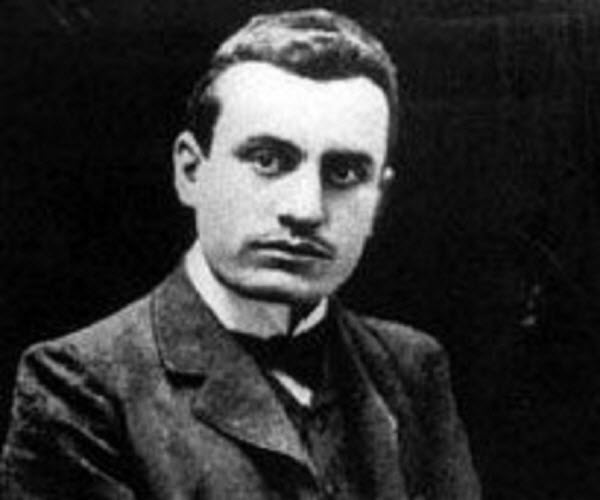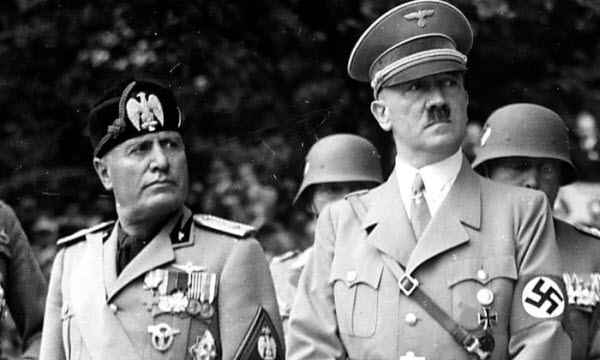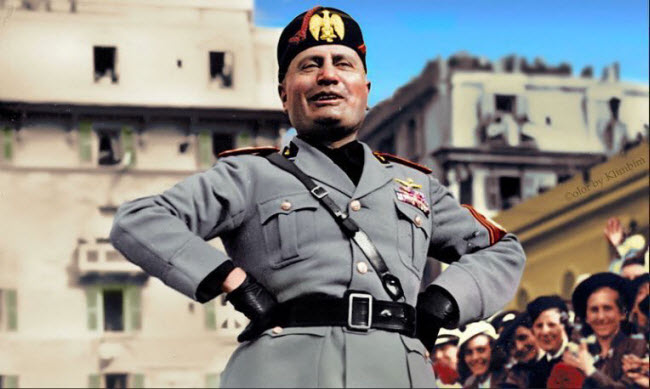Benito Mussolini, an Italian political leader, was the founder of the fascist movement in Italy. Rising to power in the early 1920s, he became the country’s Prime Minister and earned the title “Il Duce,” meaning “the Leader.” His domestic policies were marked by authoritarianism and the suppression of dissent through a secret police force. Mussolini sought to enhance his authority through a series of laws that transformed Italy into a one-party dictatorship. Internationally, he aimed to restore the grandeur of the ancient Roman Empire by expanding Italian influence through colonial ventures in Africa and intervening in European affairs by supporting fascist movements. His role in World War II was significant; allied with Adolf Hitler, Mussolini’s decision to join the Axis powers led to Italy’s invasion by the Allies. This situation forced the Italian king to remove him from office, detain him under house arrest, and ultimately, Mussolini was rescued by German forces and installed as a nominal head of the Italian Social Republic in Northern Italy. As the Allies closed in, Mussolini attempted to flee to Switzerland with his mistress but was captured by Italian partisans, executed by firing squad, and his body was later displayed publicly. His death marked the end of a tumultuous chapter in Italy’s history.

Early Life
Born on July 29, 1883, in Dovia di Predappio, Italy, Benito Amilcare Andrea Mussolini was the eldest of three children. His father, Alessandro, was a blacksmith and a fervent socialist, while his mother, Rosa Maltoni, was a devout Catholic teacher who provided stability for the family. Mussolini exhibited remarkable intelligence as a teenager but was also rebellious. His father instilled in him a passion for socialist politics and a challenge to authority, leading to multiple expulsions from school. Despite his academic difficulties, Mussolini eventually earned a teaching certificate in 1901 and briefly worked as a school director.

Socialist Movement
In 1902, Mussolini moved to Switzerland to promote socialism and quickly gained attention for his charismatic oratory skills during political demonstrations. His activities drew the ire of Swiss authorities, resulting in his arrest and expulsion. Returning to Italy in 1904, he continued advocating for socialist ideals and was briefly imprisoned for inciting violence. After his release, he worked as an editor for various socialist newspapers and eventually became the editor of the party’s major publication, “Avanti!” which significantly boosted his fame and influence.
As Italy entered World War I, Mussolini initially opposed the war but soon changed his stance, viewing it as an opportunity for Italy to become a great power. This shift led to a rupture with his socialist colleagues and his expulsion from the party. In 1915, he joined the Italian army, fought on the front lines, and attained the rank of corporal before being wounded and discharged.
Formation of the Fascist Party and Rise to Power
On March 23, 1919, Mussolini founded the Fascist Party, merging several right-wing groups into a unified force centered on opposing class discrimination and promoting nationalist sentiment. His ambition was to elevate Italy to the heights of its Roman past. He capitalized on widespread discontent following World War I, organizing a paramilitary group known as the “Black Shirts,” which intimidated political opponents and helped expand fascist influence.
As Italy descended into political chaos, with fascist squads seizing cities and burning socialist offices, Mussolini declared himself the sole figure capable of restoring order. Appointed Prime Minister and Minister of the Interior and Foreign Affairs by King Victor Emmanuel III in 1922, he gradually dismantled democratic institutions. By 1925, Mussolini had established a dictatorship, adopting the title “Il Duce.” Despite his authoritarian rule, he is credited with implementing an extensive public works program and reducing unemployment, which garnered significant public support.

Invasion of Ethiopia and World War II
In 1935, to demonstrate his regime’s strength, Mussolini invaded Ethiopia. The Italian conquest of Addis Ababa and the integration of Ethiopia into the new Italian Empire highlighted Italy’s modern military capabilities. In 1939, Mussolini supported the fascists in Spain during the Spanish Civil War, hoping to extend his influence.
German dictator Adolf Hitler, impressed by Italy’s early military successes, sought to cultivate a relationship with Mussolini, who welcomed the praise and perceived it as acknowledgment of his genius. As Germany invaded Poland and declared war on Britain and France, Italy initially remained neutral. However, with German victories in Denmark and Norway, Mussolini decided to join the Axis powers. Italy’s involvement exposed weaknesses in its military, and with defeats in Greece and North Africa, German intervention became crucial for Mussolini.
At the Casablanca Conference in 1943, Winston Churchill and Franklin D. Roosevelt devised a plan to remove Italy from the war and compel Germany to divert forces to the Eastern Front. Allied forces invaded Sicily, establishing a foothold for further operations in Italy. As the war’s devastation reached Italy, Mussolini was forced to resign on July 25, 1943, and was placed under house arrest. He was later rescued by German commandos and set up a puppet government in Northern Italy. On June 4, 1944, Rome was liberated by Allied forces, and they continued to push north.

Death
Following Rome’s liberation and the Allies’ advance, Mussolini attempted to flee to Switzerland with his mistress, Clara Petacci, but was captured by Italian partisans. On April 28, 1945, they were executed by firing squad and their bodies were displayed in Milan. The news of Mussolini’s death spread across Italy, and the public reception was one of relief rather than remorse, as his promises of Roman grandeur had led only to war and misery. Mussolini’s body was buried in an unmarked grave but was discovered in 1946 by fascist supporters, then reburied in a Lombardian monastery. In 1957, Mussolini’s widow petitioned to move his remains to a family tomb in Predappio, where he now rests in a mausoleum surrounded by marble walls and a large bust.
